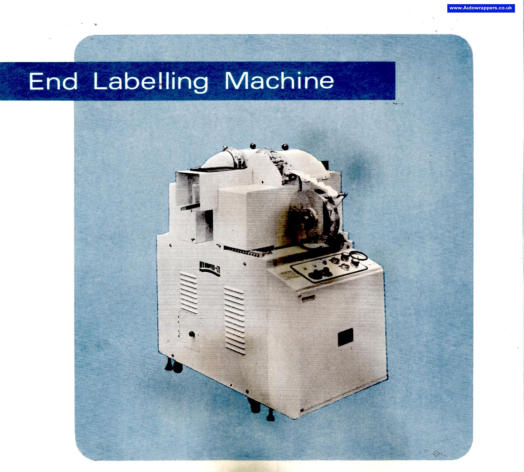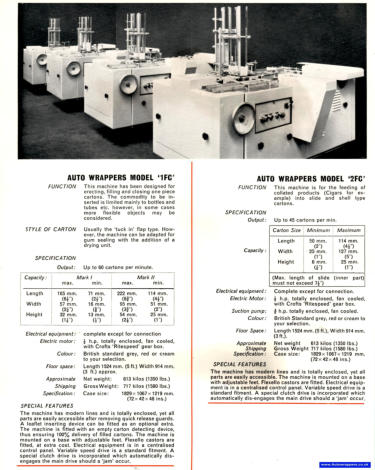



The History
Of
Autowrappers
Part 5
The Whiffler Road Factory,
Auto Wrapper (Norwich) Ltd
The Tobenoil years
1966 to 1976
The
Company
was
now
part
of
the
TOBENOIL
group,
and
by
1964
a
larger
premises
was
required
due
to
the
increasing
demand
for
the
machines,
a
site
at
Whiffler
Road
was
found,
plans
were
drawn
up
and
planning
permission
was
granted
on
the
14th
of
January
1965,
at
the
time
it
was
on
the
very
outskirts
of
Norwich
surrounded by open fields, but as Norwich grew so did the surrounding industry around the Autowrappers factory.
A new era followed ......
Photo Ref: AW0048 Whiffler Road Factory Main office building ( 1967 )
Photo Ref: AW0029 Whiffler Road Factory from above (1967)
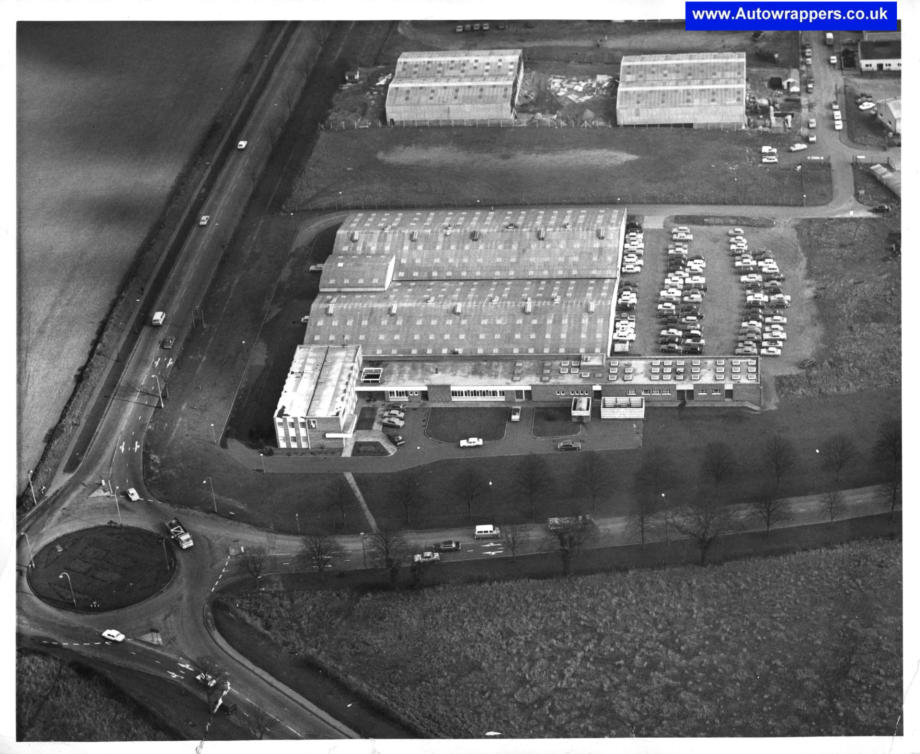
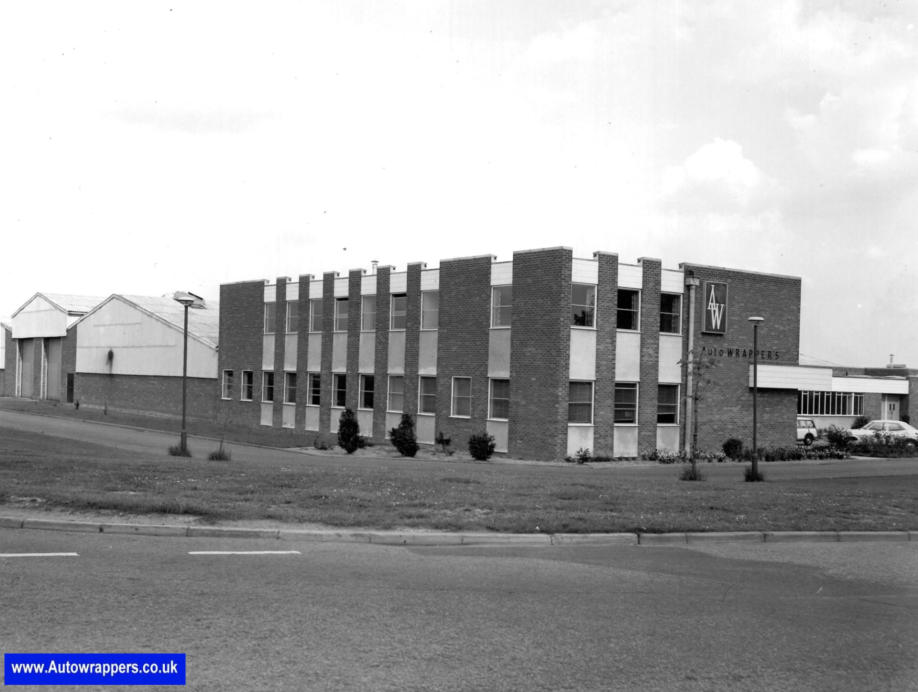
And for comparison here is what the same area looks like today (2016)
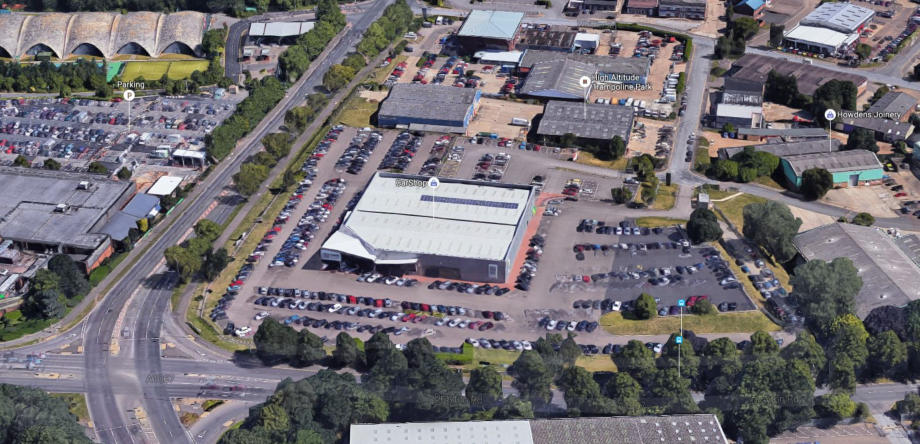
More views of the Whiffler Road factory
Photo Courtesy of Richard Rush and Trevor Kirby
Photo Ref: AW0228
Photo Ref: AW0233
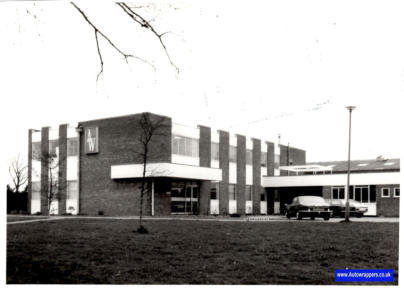
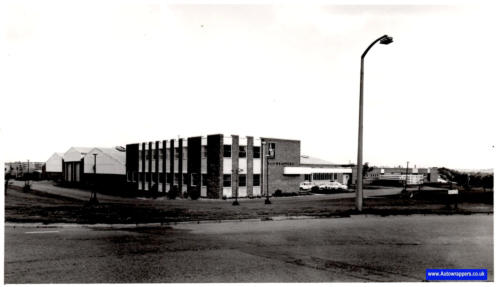
Photo Ref: AW0225
Photo Courtesy of Richard Rush and Trevor Kirby
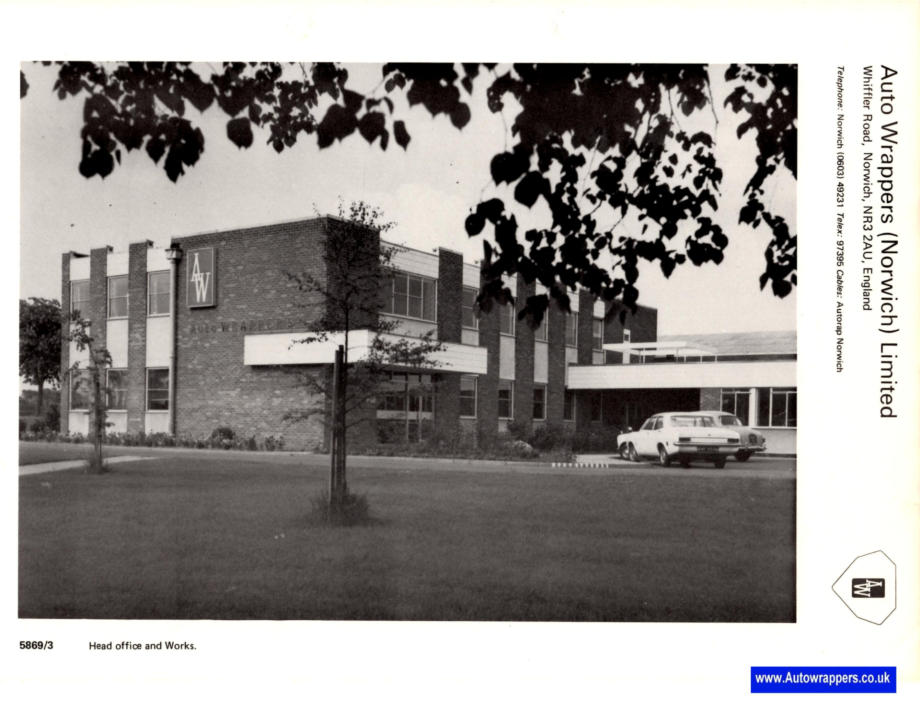
As
the
industry
around
Norwich
and
the
rest
of
the
UK
grew,
so
did
the
demand
for
wrapping
machines,
this
required
a
larger
work
force,
after
only
3
years
at
the
new
site,
the
factory
was
running
at
capacity,
By
1968
it
was
decided
to
expand
the
factory
area
from
40,000
Sq
Ft
to
75,000
Sq
Ft
,
with
an
aditional
3,300
Sq
Ft
added
to
accommodate extra office space
The
factory
was
self-sufficient
with
every
component
being
made
in
the
vast
machine
shops
by
highly
skilled
engineers,
with
the
addition
of
paint
shops
and
plating
shops
the
whole
manufacturing
process
was
self-contained
and efficiently run.
A new state of the art design and drawing office with was created and still not a computer in sight
Photo Ref: AW0227 Photo Courtesy of Richard Rush and Trevor Kirby
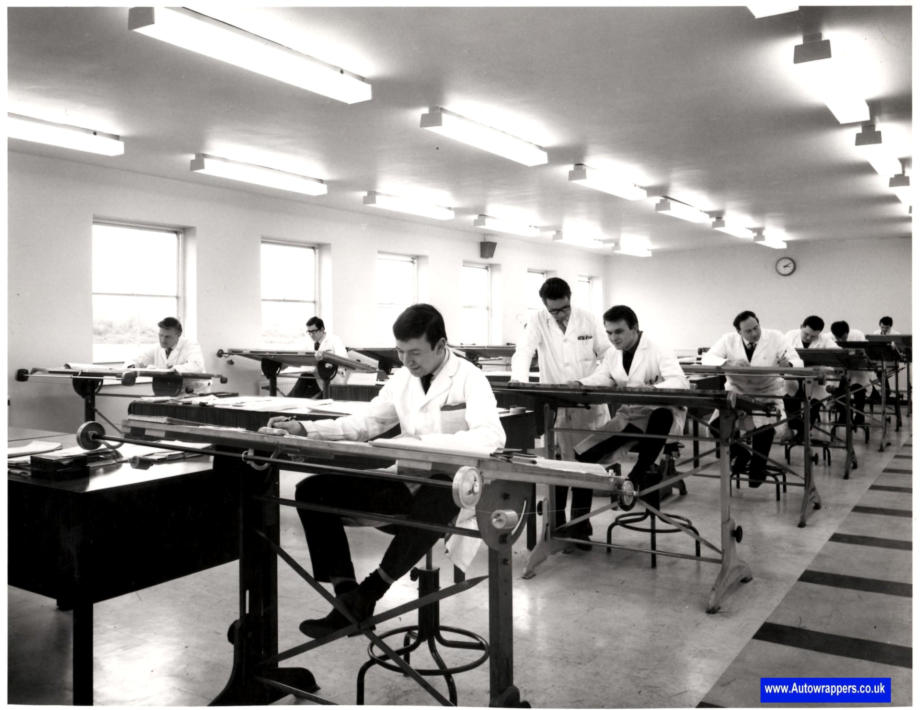
Individual components being made in the machine shop at Whiffler Road
Photo Ref: AW0044 Whiffler Road Machine shop
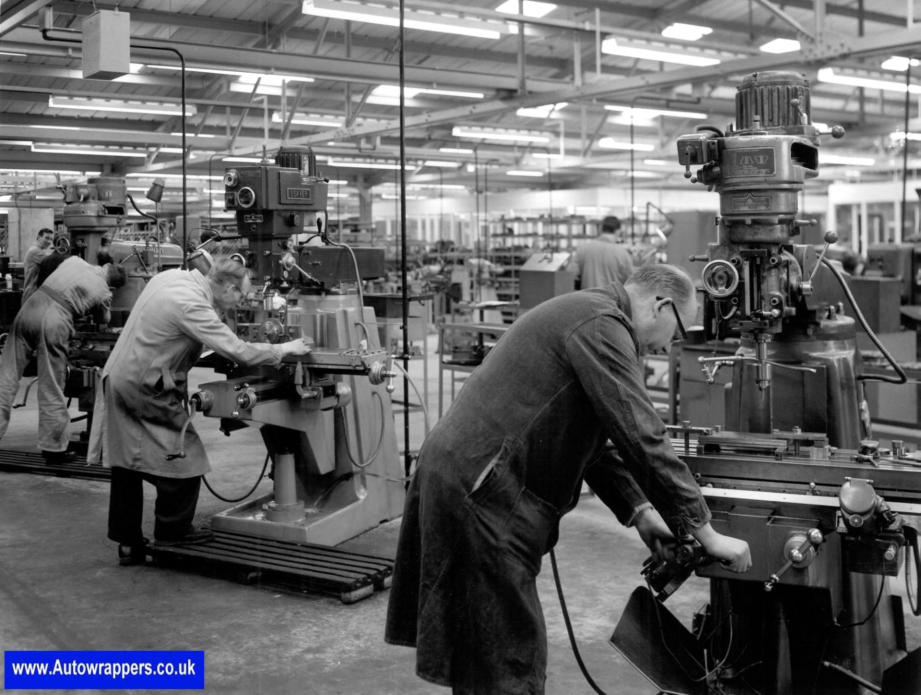
After each component is manufactured, it then passes through the inspection department that checks that it is
dimensionally correct and meets the required tolerances.
Photo Ref: AW0226
Photo Courtesy of Richard Rush and Trevor Kirby
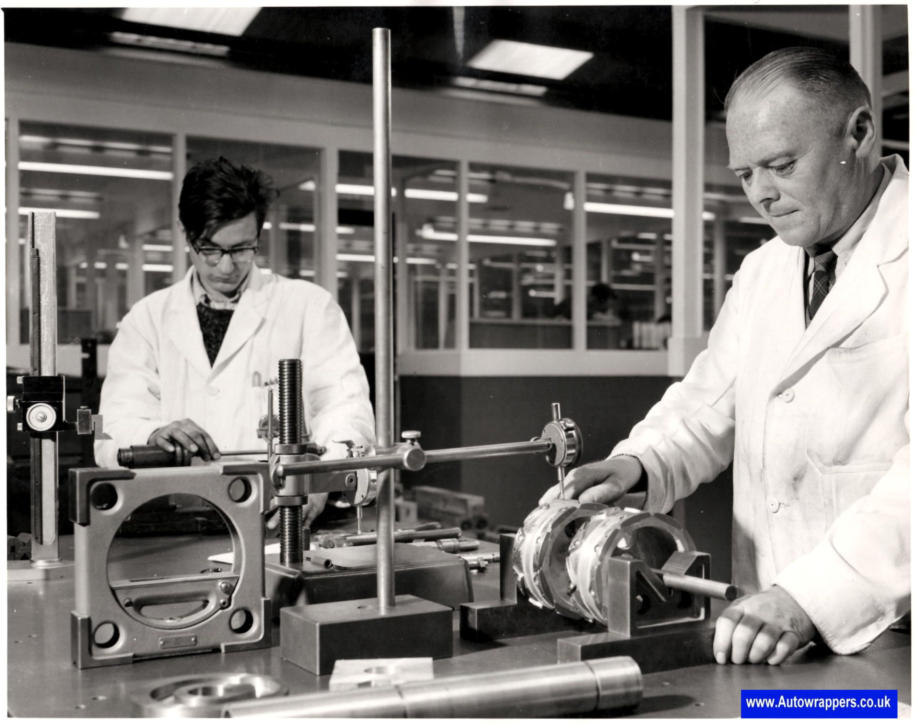
After
the
components
are
inspected
some
parts
may
be
required
to
be
plated
to
prevent
corrosion,
usually
zinc
or
chrome
plating
was
used.
most
of
the
plating
equipment
shown
here
at
whiffler
road
plating
shop
was
the
original
plating equipment first used in the Nissan Hut back in the late 40s ( see earlier history section )
Photo Ref: AW0223 Photo Courtesy of Richard Rush and Trevor Kirby
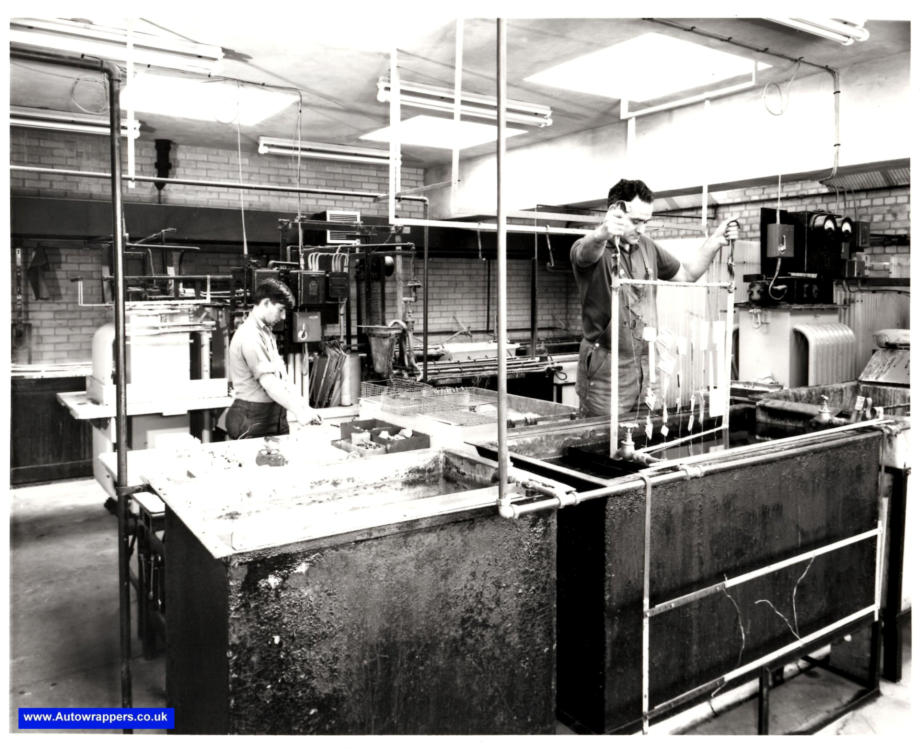
Photo Ref: AW0046 The Whiffler Road Plating Shop
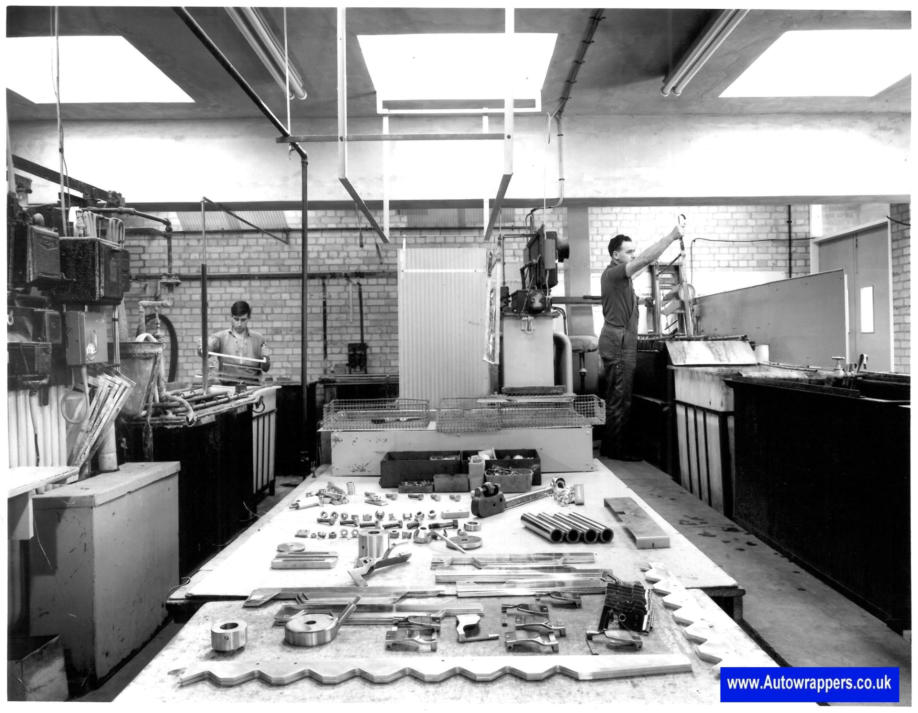
Once
the
components
are
complete
and
ready,
assembly
begins
on
the
assembly
shop
floor
and
the
machines
start
to
take
shape.
below
is
an
early
photo
from
whiffler
road
as
most
of
the
Roll
wrappers
were
of
the
original
"R"
type.
Photo Ref: AW0232 Photo Courtesy of Richard Rush and Trevor Kirby
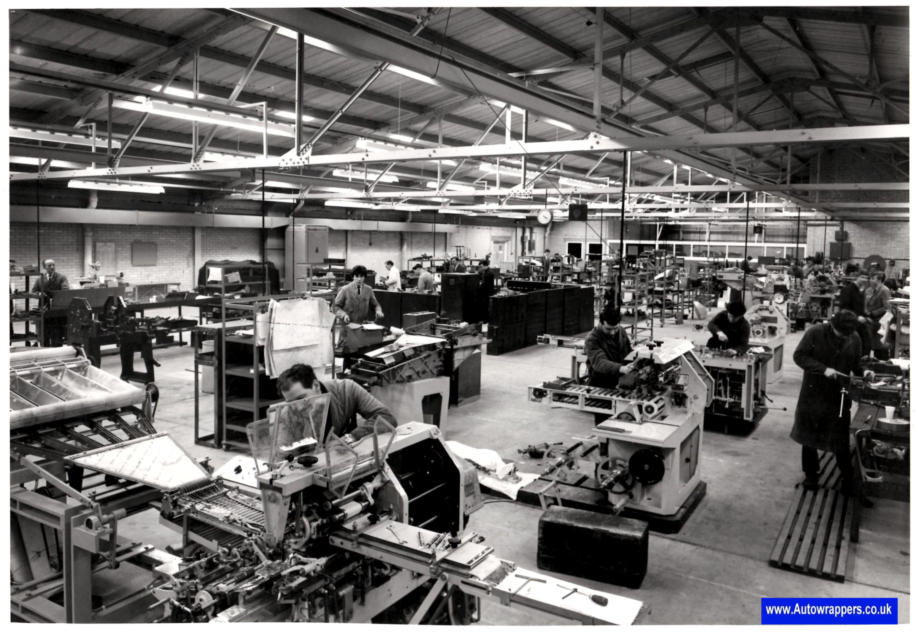
Below
is
a
later
photo
at
Whiffler
Rd
and
shows
Rows
of
Super
2000
Roll
Wrappers
in
various
stages
of
construction. the R type machines were gradually phased out by the end of the 60s
The following information was sent to us by Rod Horne
In
the
photo
below
the
man
leaning
into
the
machine
was
Frank
Oakley.
I
worked
for
a
couple
of
years
with
Frank
as
part
of
my
training.
At
that
time
John
Plumstead
was
the
leading
hand
before
becoming
more
involved
with
development.
Frank
and
I
got
on
well
and
my
wife-to-be
and
I
socialised
with
Frank
and
his
wife
Nancy.
I
saw
Nancy
in
two
photographs,
AW0077
and
AW0120.
I
believe
Frank
died
in
the
late
60s
but
by
then
we
had
drifted
apart
and
I
learned
of
his
death
by
chance.
They
came
to
our
wedding. Also
in
the
same
picture
is
David
Garnett.
David and I were apprentices together although he was maybe a couple of years older.
Photo Ref: AW0234 Photo Courtesy of Richard Rush and Trevor Kirby
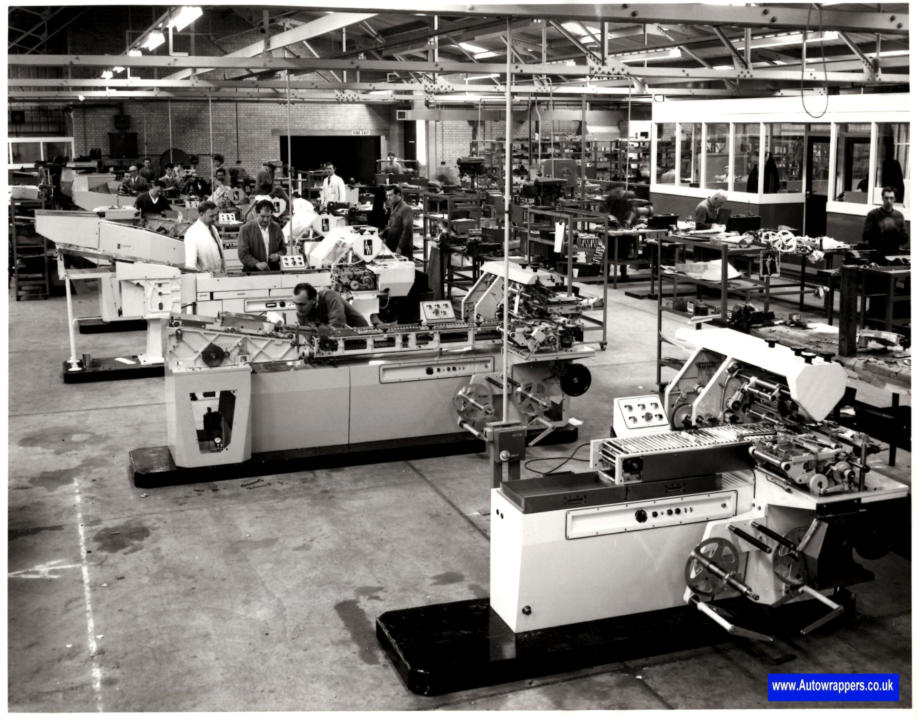
After
construction
each
machine
is
individually
tested
to
make
sure
that
it
meets
the
required
performence
level
and
customer
quality
expectations.
The
photo
below
shows
Jack
Robinson
and
Dennis
Smith
overseeing
the
testing of a Super 2000.
We were sent the following information by Rod Horne
The
man
on
the
left
was
one
Jack
Robinson
who
was
foreman
of
the
R
machine
section
during
my
time
at
AW.
Jack
was
from
the
north
of
England,
and
had
some
quaint
expressions
one
being
“arris”
for
sharp
edge
so
you
would
be
told
to
get
a
file
a
remove
the
arrises
from
something.
He
once
told
a
fitter,
Eddie
Trowse,
that
he
should
be behind a plough. Eddie, never at a loss for words said “… and you should be pulling it.”
Photo Ref: AW0231 Photo Courtesy of Richard Rush and Trevor Kirby with aditional info from Rod Horne
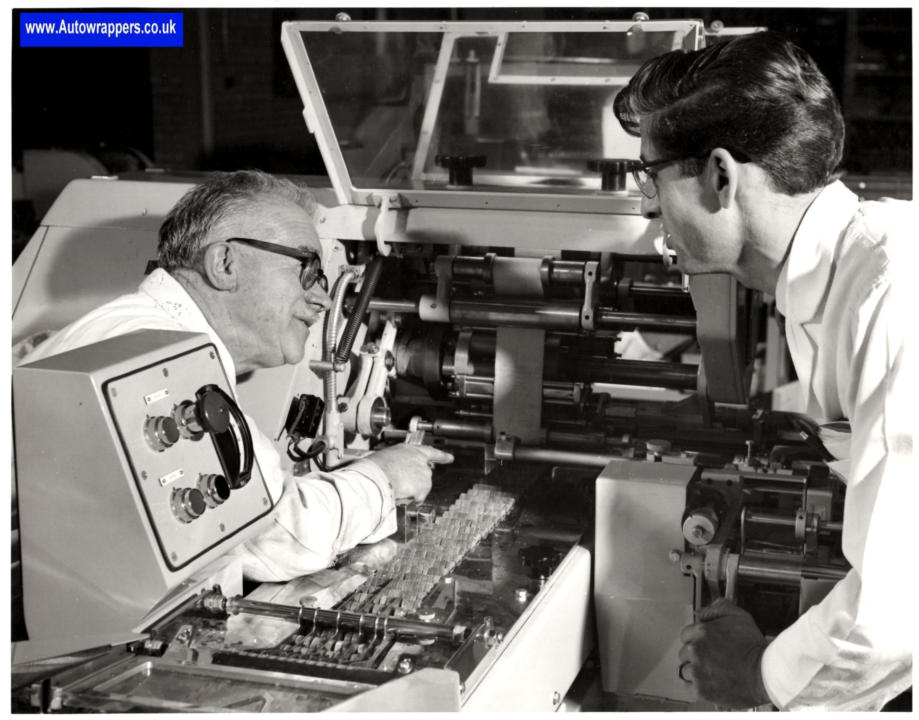
After testing..... the machines make thier way to the dispatch area where they are crated and loaded on trucks for
dispatch to the customers.
Photo Ref: AW0246 Photo Courtesy of Richard Rush and Trevor Kirby
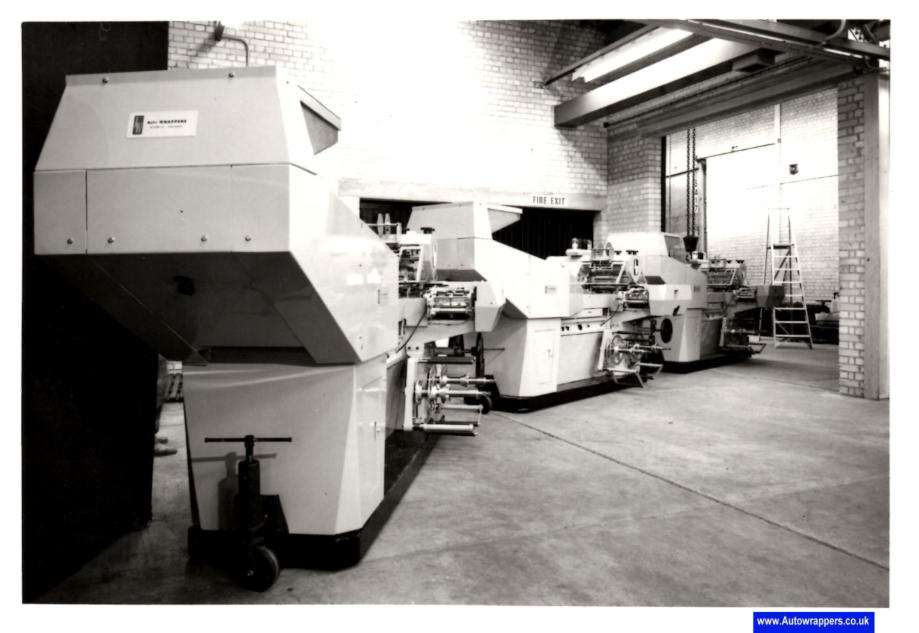
The Rise of the Flow-Wrapper
At
this
time
Flow-Wrapping
was
the
next
big
thing,
more
customers
wanted
this
type
of
packaging,
Autowrappers
entry
into
the
Flow-wrapping
market
in
the
early
60s
had
been
successful
with
the
AT
machine
and
the
Flow-wrap
market
was
growing
rapidly,
and
due
to
this
demand
Swiss
packaging
manufacturer
SIG
Pack
(
Now
owned
by
Bosch
Packaging
)
approached
Autowrappers
with
a
deal
to
manufacture
their
range
of
HSU
flow-wrappers
at
the
Norwich
Factory
under
license.
this
agreement
continued
until
the
early
70s,
David
Mortimer
has
told
us
that
when
he
joined
Autowrappers
in
1968
they
were
still
building
the
HSUs
and
the
last
HSU
left
the
factory
in
1971
and
Auto
Wrappers were still supplying parts for the HSUs into the early 80s.
The
main
reason
that
the
HSU
was
discontinued
from
manufacture
at
Whiffler
Road,
was
that
during
this
time
the
AT
machine
had
been
redeveloped
into
the
Mk1
Versoflow
machine
and
the
Versoflow
was
proving
very
popular
with
customers,
and
because
of
this,
it
started
outselling
the
HSU
machines,
unfortunately
SIG
pack
were
not
pleased
that
Autowrappers
were
selling
more
of
the
Versoflow
machines
than
the
HSUs
and
saw
Autowrappers
as
a main competitor so promptly withdrew the license to manufacture.
Photo Ref: AW0553 the AT Machine
Photo Ref: AW0607 the SIG HSU Machine ( made under licence )
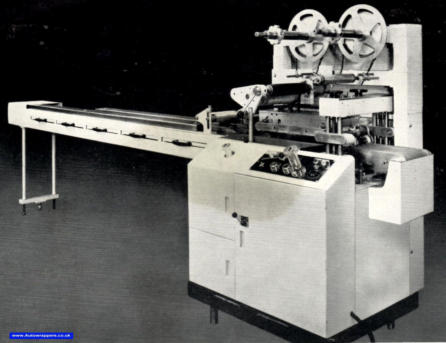
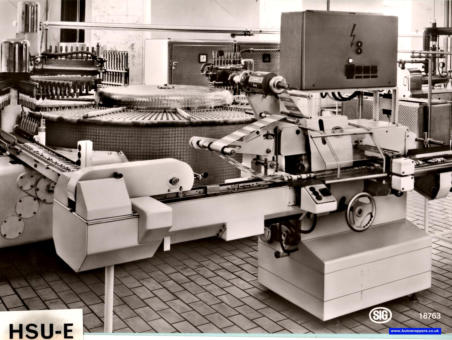
The New Versoflow Machine had replaced the AT machine and proved very popular with the customers at the time
Photo Ref: AW0246
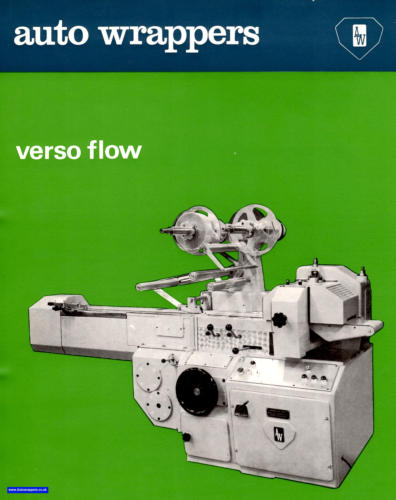
The
Reception
Area
at
Whiffler
Road
below,
although
not
considered
modern
by
todays
standards
was
the
leading
edge of design in 1967.it was such an Icon that It even had its own feature in the local Eastern Evening News
Photo Ref: AW0047 The Whiffler Road Reception Area
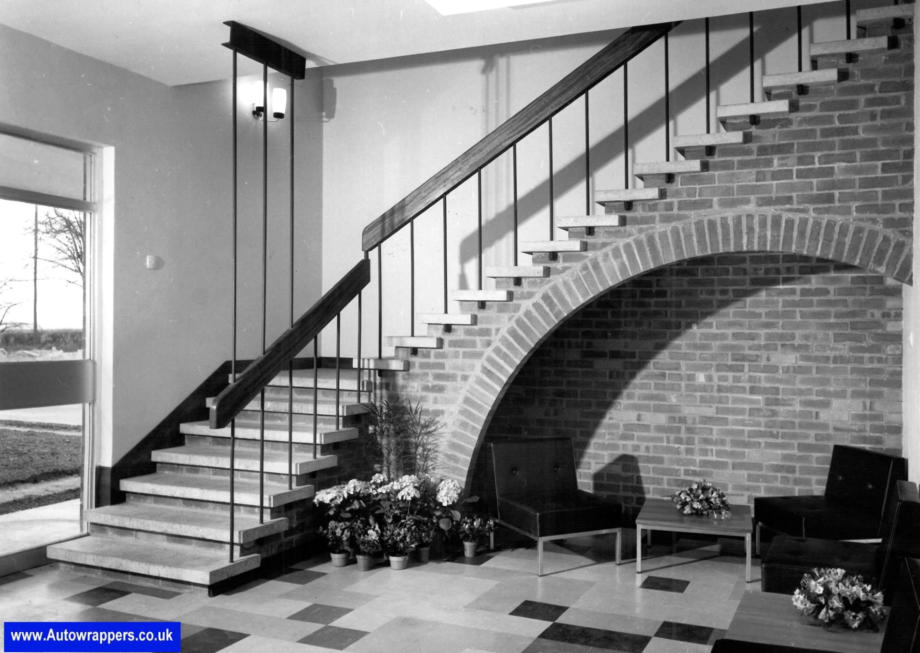
Photo Ref: AW0153 EEN Autowrappers reception feature
( Photo Courtesy of Geoff King / Richard Bull )
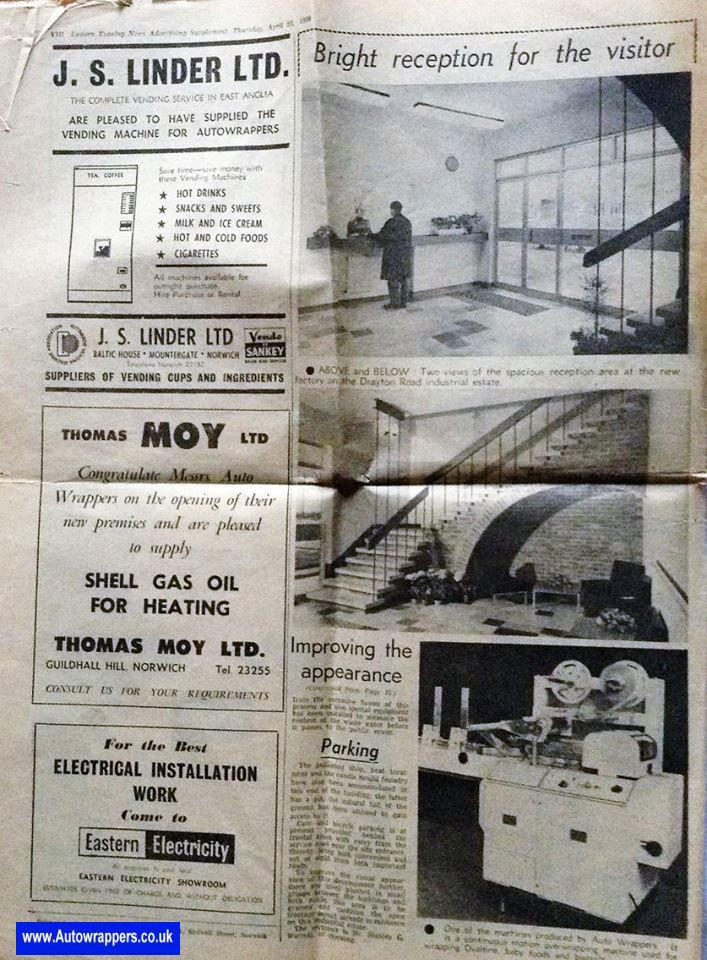
The
design
and
development
departments
were
expanding
the
range
of
machines
being
manufactured
and
also
developing
packaging
solutions
in
areas
that
had
previously
been
left
untouched
by
Autowrappers
in
the
past. And
very soon, the takeover of Tobenoil by GEI International would allow the company to diversify into other areas.
